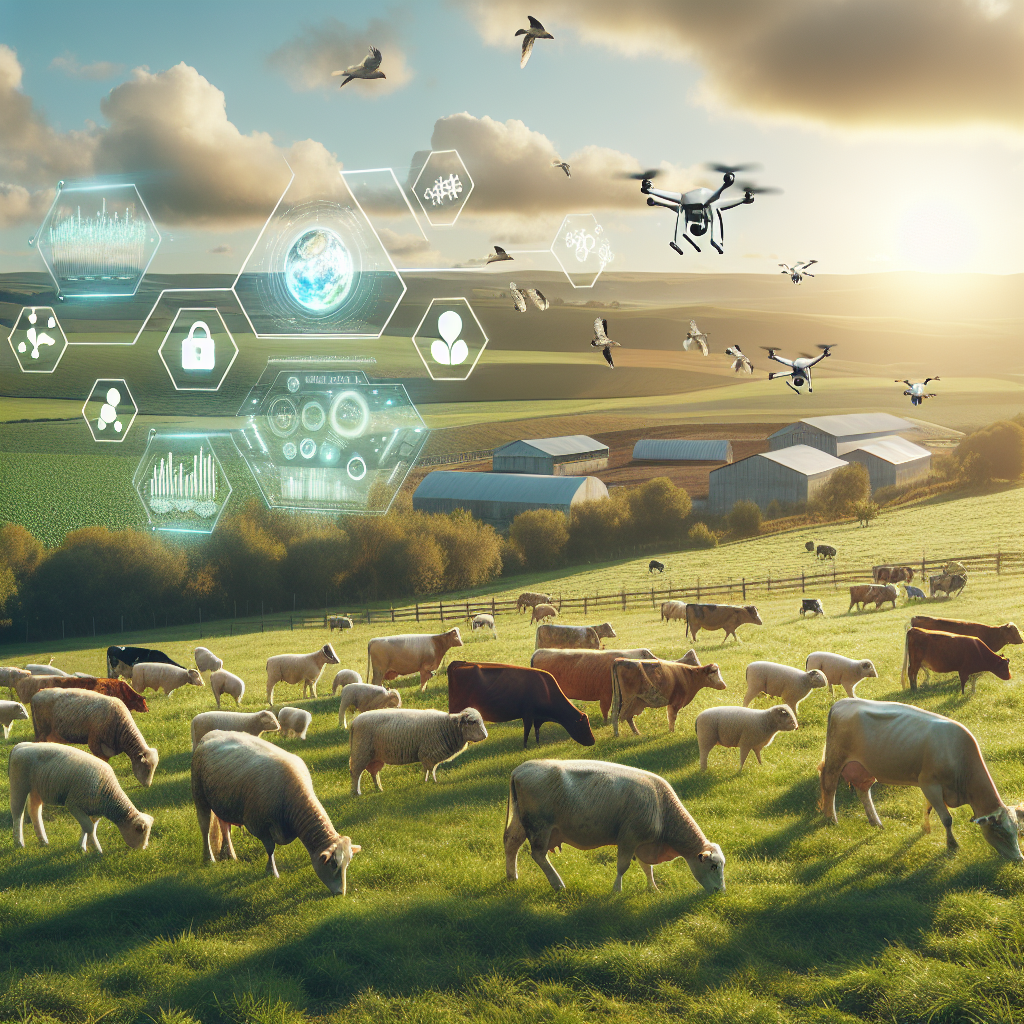Advancements in artificial intelligence (AI) are revolutionizing various industries, and agriculture is no exception. In particular, AI-driven solutions are being increasingly utilized in sustainable livestock production and welfare to improve efficiency, productivity, and animal well-being. By harnessing the power of AI, farmers and ranchers can make more informed decisions, optimize resources, and enhance the overall sustainability of their operations.
One of the key areas where AI is making a significant impact in livestock production is in the monitoring and management of animal health and welfare. By using AI-powered sensors and cameras, farmers can collect real-time data on various parameters such as body temperature, heart rate, and behavior patterns of individual animals. This data can then be analyzed to detect any signs of illness or distress at an early stage, allowing for prompt intervention and treatment.
Moreover, AI algorithms can also be used to predict and prevent disease outbreaks by analyzing historical data and identifying patterns that may indicate potential health risks. By implementing proactive measures based on these predictions, farmers can minimize the spread of diseases and reduce the need for antibiotics, ultimately leading to improved animal welfare and reduced environmental impact.
In addition to health monitoring, AI technologies are also being used to optimize feeding and nutrition management in livestock production. By analyzing data on feeding patterns, nutrient requirements, and growth rates, AI algorithms can generate personalized feeding plans for individual animals, ensuring that they receive the right balance of nutrients and vitamins to support their health and growth.
Furthermore, AI-driven solutions can help farmers reduce feed waste and improve feed efficiency by adjusting feeding schedules and quantities based on real-time data and environmental conditions. This not only leads to cost savings but also minimizes the environmental impact of livestock production by reducing the amount of feed and nutrients that are wasted.
Another area where AI is playing a crucial role in sustainable livestock production is in the management of environmental resources. By using AI algorithms to analyze data on water usage, energy consumption, and waste production, farmers can identify opportunities for resource optimization and waste reduction.
For example, AI-powered irrigation systems can monitor soil moisture levels and weather conditions to optimize water usage and reduce water waste in crop production, which in turn benefits livestock by ensuring a sustainable supply of feed and forage. Similarly, AI algorithms can help farmers reduce energy consumption by optimizing heating and cooling systems in livestock facilities, leading to cost savings and a lower carbon footprint.
Overall, the integration of AI-driven solutions in sustainable livestock production and welfare is a game-changer for the agricultural industry. By leveraging the power of AI to monitor animal health, optimize feeding and nutrition, and manage environmental resources more efficiently, farmers can improve productivity, reduce costs, and enhance the well-being of their animals.
FAQs:
Q: How does AI technology improve animal welfare in livestock production?
A: AI technology allows farmers to monitor the health and behavior of individual animals in real-time, enabling early detection of illness or distress. By analyzing data on feeding patterns, nutrition requirements, and environmental conditions, AI algorithms can generate personalized care plans to ensure that animals receive the right balance of nutrients and vitamins to support their health and well-being.
Q: How can AI help prevent disease outbreaks in livestock production?
A: AI algorithms can analyze historical data and identify patterns that may indicate potential health risks, allowing farmers to implement proactive measures to prevent disease outbreaks. By monitoring parameters such as body temperature, heart rate, and behavior patterns, AI-powered sensors can detect signs of illness at an early stage, enabling prompt intervention and treatment to minimize the spread of diseases.
Q: How does AI technology optimize resource management in livestock production?
A: AI technology can analyze data on water usage, energy consumption, and waste production to identify opportunities for resource optimization and waste reduction. By optimizing feeding schedules, adjusting nutrient requirements, and monitoring environmental conditions, AI algorithms help farmers reduce feed waste, improve feed efficiency, and minimize the environmental impact of livestock production.
Q: What are the benefits of using AI-driven solutions in sustainable livestock production?
A: The benefits of using AI-driven solutions in sustainable livestock production include improved animal health and welfare, increased productivity, reduced costs, and enhanced environmental sustainability. By harnessing the power of AI to monitor animal health, optimize feeding and nutrition, and manage environmental resources more efficiently, farmers can make more informed decisions and achieve better outcomes for their operations.

